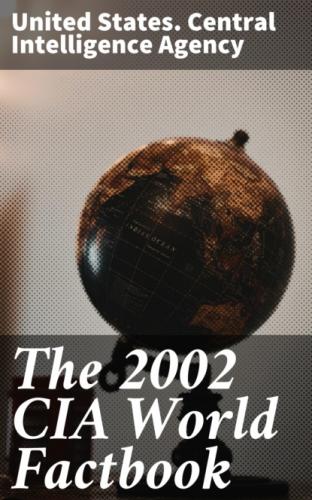HIV/AIDS - adult prevalence rate: 7.73% (1999 est.)
HIV/AIDS - people living with HIV/AIDS: 540,000 (1999 est.)
HIV/AIDS - deaths: 52,000 (1999 est.)
Nationality: noun: Cameroonian(s) adjective: Cameroonian
Ethnic groups: Cameroon Highlanders 31%, Equatorial Bantu 19%, Kirdi 11%, Fulani 10%, Northwestern Bantu 8%, Eastern Nigritic 7%, other African 13%, non-African less than 1%
Religions: indigenous beliefs 40%, Christian 40%, Muslim 20%
Languages: 24 major African language groups, English (official), French (official)
Literacy: definition: age 15 and over can read and write total population: 63.4% male: 75% female: 52.1% (1995 est.)
Government Cameroon
Country name: Republic of Cameroon conventional short form: Government type: unitary republic; multiparty presidential regime (opposition parties legalized in 1990) note: preponderance of power remains with the president
Capital: Yaounde
Administrative divisions: 10 provinces; Adamaoua, Centre, Est,
Extreme-Nord, Littoral, Nord, Nord-Ouest, Ouest, Sud, Sud-Ouest
Independence: 1 January 1960 (from French-administered UN trusteeship)
National holiday: Republic Day (National Day), 20 May (1972)
Constitution: 20 May 1972 approved by referendum; 2 June 1972 formally adopted; revised January 1996
Legal system: based on French civil law system, with common law influence; has not accepted compulsory ICJ jurisdiction
Suffrage: 20 years of age; universal
Executive branch: President Paul BIYA (since 6 November 1982) elections: held 12 October 1997 (next to be held NA October 2004); prime minister appointed by the president head of government: Prime Minister Peter Mafany MUSONGE (since 19 September 1996) cabinet: Cabinet appointed by the president from proposals submitted by the prime minister election results: President Paul BIYA reelected; percent of vote - Paul BIYA 92.6%; note - supporters of the opposition candidates boycotted the elections, making a comparison of vote shares relatively meaningless
Legislative branch: unicameral National Assembly or Assemblee Nationale (180 seats; members are elected by direct popular vote to serve five-year terms; note - the president can either lengthen or shorten the term of the legislature) elections: last held 17 May 1997 (next to be held NA 2002) election results: percent of vote by party - NA%; seats by party - RDCP 109, SDF 43, UNDP 13, UDC 5, UPC-K 1, MDR 1, MLDC 1; note - results from seven contested seats were canceled by the Supreme Court, further elections on 3 August 1997 gave these seats to the RDCP note: the constitution calls for an upper chamber for the legislature, to be called a Senate, but it has yet to be established
Judicial branch: Supreme Court (judges are appointed by the president); High Court of Justice (consists of nine judges and 6 substitute judges, elected by the National Assembly)
Political parties and leaders: Cameroonian Democratic Union or UDC
[Adamou NDAM NJOYA]; Democratic Rally of the Cameroon People or RDCP
[Paul BIYA]; Movement for the Defense of the Republic or MDR [Dakole
DAISSALA]; Movement for the Liberation and Development of Cameroon or
MLDC [leader Marcel YONDO]; Movement for the Youth of Cameroon or MYC
[Dieudonne TINA]; National Union for Democracy and Progress or UNDP
[Maigari BELLO BOUBA, chairman]; Social Democratic Front or SDF [John FRU
NDI]; Union of Cameroonian Populations or UPC [Augustin Frederic KODOCK]
Political pressure groups and leaders: Southern Cameroon National Council [Frederick Ebong ALOBWEDE]; Human Rights Defense Group [Albert MUKONG, president]
International organization participation: ACCT, ACP, AfDB, BDEAC, C,
CCC, CEEAC, CEMAC, ECA, FAO, FZ, G-19, G-77, IAEA, IBRD, ICAO, ICC,
ICFTU, ICRM, IDA, IDB, IFAD, IFC, IFRCS, ILO, IMF, IMO, Interpol,
IOC, ISO (correspondent), ITU, MONUC, NAM, OAU, OIC, OPCW, PCA, UN,
UN Security Council (temporary), UNCTAD, UNESCO, UNIDO, UNITAR, UNMIK,
UPU, WCL, WFTU, WHO, WIPO, WMO, WToO, WTrO
Diplomatic representation in the US: chief of mission: Ambassador Jerome MENDOUGA chancery: 2349 Massachusetts Avenue NW, Washington, DC 20008 FAX: [1] (202) 387-3826 telephone: [1] (202) 265-8790
Diplomatic representation from the US: chief of mission: Ambassador
George McDade STAPLES embassy: Rue Nachtigal, Yaounde mailing address:
P. O. Box 817, Yaounde; pouch: American Embassy, Department of State,
Washington, DC 20521-2520 telephone: [237] 23-40-14, 22-17-94 FAX:
[237] 23-07-53 branch office(s): Douala
Flag description: three equal vertical bands of green (hoist side), red, and yellow with a yellow five-pointed star centered in the red band; uses the popular pan-African colors of Ethiopia
Economy Cameroon
Economy - overview: Because of its oil resources and favorable agricultural conditions, Cameroon has one of the best-endowed primary commodity economies in sub-Saharan Africa. Still, it faces many of the serious problems facing other underdeveloped countries, such as a top-heavy civil service and a generally unfavorable climate for business enterprise. Since 1990, the government has embarked on various IMF and World Bank programs designed to spur business investment, increase efficiency in agriculture, improve trade, and recapitalize the nation's banks. In June 2000, the government completed an IMF-sponsored, three-year structural adjustment program; however, the IMF is pressing for more reforms, including increased budget transparency and privatization. International oil and cocoa prices have considerable impact on the economy.
GDP: purchasing power parity - $26.4 billion (2001 est.)
GDP - real growth rate: 4.9% (2001 est.)
GDP - per capita: purchasing power parity - $1,700 (2001 est.)
GDP - composition by sector: agriculture: 44% industry: 20% services: 36% (2000 est.)
Population below poverty line: 48% (2000 est.)
Household income or consumption by percentage share: lowest 10%: NA% highest 10%: NA%
Inflation rate (consumer prices): 2% (2000 est.)
Labor force: NA
Labor force - by occupation: agriculture 70%, industry and commerce 13%, other 17%
Unemployment rate: 30% (2001 est.)
Budget: revenues: $2.2 billion expenditures: $2.1 billion, including capital expenditures of $NA (FY00/01 est.)
Industries: petroleum production and refining, food processing, light consumer goods, textiles, lumber
Industrial production growth rate: 4.2% (1999 est.)
Electricity - production: 3.623 billion kWh (2000)
Electricity - production by source: fossil fuel: 2.57% hydro: 97.43% other: 0% (2000) nuclear: 0%
Electricity - consumption: 3.369 billion kWh (2000)
Electricity - exports: 0 kWh (2000)
Electricity - imports: 0 kWh (2000)
Agriculture - products: coffee, cocoa, cotton, rubber, bananas, oilseed, grains, root starches; livestock; timber
Exports: $2.1 billion (f.o.b., 2000 est.)
Exports - commodities: crude oil and petroleum products, lumber, cocoa
